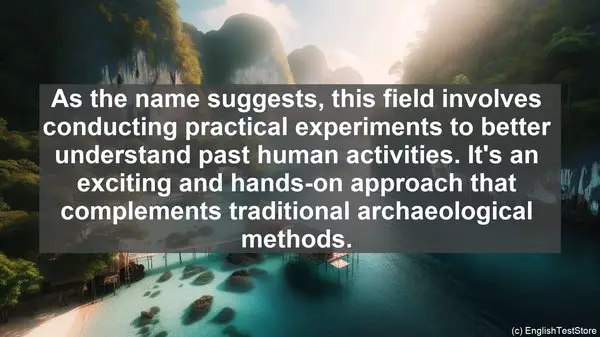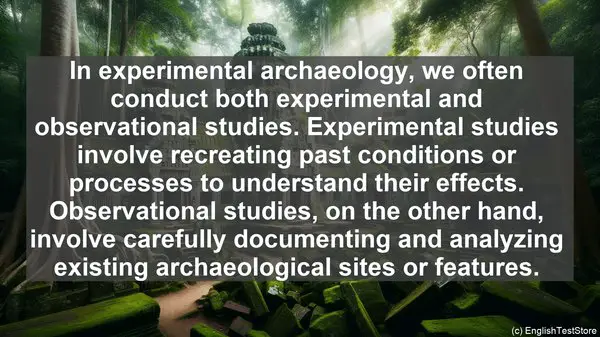Introduction to Experimental Archaeology
Welcome to today’s lesson on experimental archaeology. As the name suggests, this field involves conducting practical experiments to better understand past human activities. It’s an exciting and hands-on approach that complements traditional archaeological methods.
Word 1: Replication vs. Reproduction
One of the first terms that often causes confusion is ‘replication’ and ‘reproduction.’ While they may seem similar, they have distinct meanings. Replication refers to recreating an object or a process exactly as it was in the past. On the other hand, reproduction involves creating something similar to the original, but not necessarily identical.
Word 2: Deductive vs. Inductive
In experimental archaeology, we often use both deductive and inductive reasoning. Deductive reasoning involves starting with a general theory or hypothesis and then testing it through experiments. Inductive reasoning, on the other hand, involves making generalizations based on specific observations or data.

Word 3: Analogous vs. Homologous
When studying artifacts or structures, we often come across the terms ‘analogous’ and ‘homologous.’ Analogous features are similar in function or appearance, but they have different evolutionary origins. Homologous features, on the other hand, have a common evolutionary origin, even if they serve different functions.
Word 4: Context vs. Content
In archaeology, context and content are crucial. Context refers to the spatial and temporal associations of an artifact or a feature. It’s about understanding where and when something was found. Content, on the other hand, refers to the actual material or information contained within the artifact or feature.
Word 5: Primary vs. Secondary Sources
When conducting research, it’s important to differentiate between primary and secondary sources. Primary sources are firsthand accounts or direct evidence from the time period being studied. Secondary sources, on the other hand, are interpretations or analyses of primary sources by later scholars.

Word 6: Stratigraphy vs. Seriation
Stratigraphy and seriation are two important methods in archaeological analysis. Stratigraphy involves studying the layers or strata of soil or sediment to understand the chronological sequence of events. Seriation, on the other hand, is a relative dating method that involves arranging artifacts or features in a chronological order based on their style or attributes.
Word 7: Lithics vs. Ceramics
Lithics and ceramics are two broad categories of artifacts. Lithics refer to objects made of stone, such as tools or weapons. Ceramics, on the other hand, are objects made of clay or other earthen materials, such as pottery. Both lithics and ceramics provide valuable insights into past human activities.
Word 8: Experimental vs. Observational Studies
In experimental archaeology, we often conduct both experimental and observational studies. Experimental studies involve recreating past conditions or processes to understand their effects. Observational studies, on the other hand, involve carefully documenting and analyzing existing archaeological sites or features.
Word 9: Taphonomy vs. Typology
Taphonomy and typology are two important aspects of archaeological analysis. Taphonomy focuses on the processes that affect the preservation and formation of archaeological remains. Typology, on the other hand, involves classifying artifacts or features based on their attributes or characteristics.
Word 10: Ethnography vs. Ethnoarchaeology
The last pair of terms we’ll explore is ethnography and ethnoarchaeology. Ethnography involves studying contemporary cultures or societies to understand their behaviors or practices. Ethnoarchaeology, on the other hand, is the study of living or recent societies to gain insights into past archaeological cultures.
